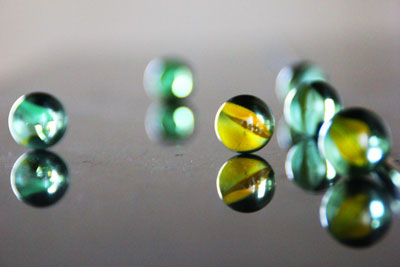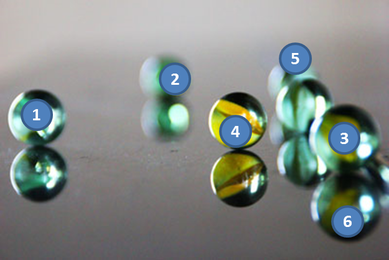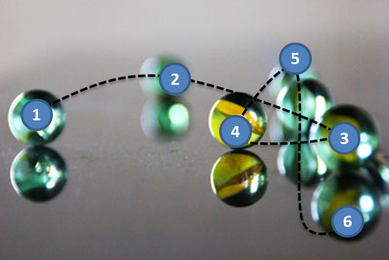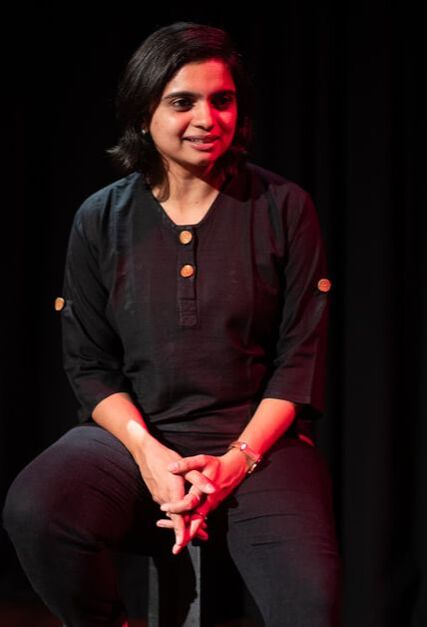In 2012, I was preparing for my first solo, an intimate theatre performance, where I was to share personal moments from my life with the audience sitting around me. I had my lines, my costume and I had rehearsed my act quite a few times. I was confident that I would have a great show. A few days before the show, I invited my mentor into the rehearsal studio to take a look at my performance and give me some feedback. Five minutes into the performance, she stopped me and said that my look was quite intimidating. She asked me soften my gaze and continue my performance. Little did I know that I was intimidating her with my eye contact When we are busy thinking about what to say, to deliver the facts right, we are unaware about the signals we are sending people, through our body, voice and eyes. Our eyes communicate way more than we think they do. People can gauge the mood that we are in and also be able to predict our emotional state by looking into our eyes. Here's how theatre based training can help us make effective connections and communicate powerfully - through Eyetact. Activity: Eyetact- focus and movement Through this activity, we are going to understand focusing techniques and the way our eyes move to address audiences. Step 1: Take a look at the image below. Pick one marble and focus your gaze at that alone for about 10 seconds You will notice that your eyes are quite strained after the 10 second sustained focus. This is because, when we look at one particular point, our focus tends to narrow and our eyes widen. This is typically called hard focus and can be intimidating when you are in a one-on-one situation. The outcome: People in front you can interpret that you are probably angry or irritated. If we kept our gaze in one fixed spot, while addressing a group of people, the others could feel cut off from the conversation. Step 2: Now sit back and look at the entire image for 10 seconds without paying attention to any one thing in particular. You are probably more relaxed and you surely notice more in the image than you did the first time. When we relax our gaze, we let things come into our sphere of vision and don't go in search of something particular. This way, we are able to get a better visual insight from what you are looking at. The outcome: You come across as a relaxed, calm and confident individual. This kind of focus is called soft focus, a friendly, conversational approach to making eye contact. Soft focus is a great way to address a group of people, to inform or inspire. Now that we understand hard focus and soft focus, let's look at how we can move our eyes in a fluid way to make effective connections with our audience. Step 3: Relax the eyes and bring them to a state of soft focus. Take a look at the image below and move your gaze from marble number 1 to marble number 6. Pay attention to the way the eyes are moving. When we are addressing multiple people, our eye contact can tend to be a bit jerky, shifting from one person to another. A simple way to make a smooth transition is to imagine a fluid thread connecting the people in the space. This will make the eye movement and transition smooth and powerful. Step 4: Now repeat the movement from number 1 to 6. You will notice the difference. *Note that it is also important to move your head along with your eyes. Keeping your head stationery and moving only your gaze will look disconnected.
Outcome of theatre based Eyetact training
1 Comment
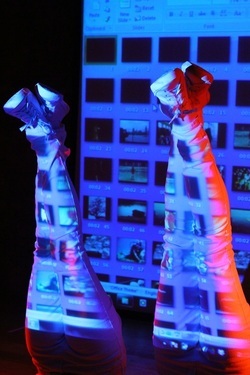 About a year ago, I was sitting in a session on performance composition. The professor facilitating the session started off with a question, what does warm up mean to you ? There were different answers in the room, but the one that stood out for me was this line contributed by my friend and performer Gintare. She said "The physical and psychological opening to the creative process". This one line has greatly influenced the way I approach my warm up sessions prior to beginning a creative process. Devising original work calls for a lot of self preparation for all those involved. Devising is about every individual in the space collectively influencing the creative outcome - and this requires you to in a flexible frame of mind and body, being open to everything coming in and being able to process content leaving aside our biases. Preparing the body and the mind together is critical. I have observed in many rehearsals over the years, that warm up is just a routine. I've noticed actors doing regular stretches, voice warmups and calling out lines, alone or in groups. This is certainly helpful, but the question every performer should ask themselves is - Is it making your mind and body flexible ? Is it really opening you up to the creative process that lies ahead of you ? There is no one warm up process that will work for all. Each individual is different and the warm up outcome will decide what we do in the session. I also urge performers to create for themselves and the group - A warm up outcome, which is to say, what you want the warm up to achieve. This could range from high energy to focus to timing to vocal clarity. Every individual in the performance can have different outcomes, but when it comes to an environment of collaboration, of shared space, the group warms could have similar outcomes, that the group works toward. When one is warmed up physically and psychologically, the ability to take on content and process it is much richer. The contributions made in the space feel fresher. And when people in the space know that the other is warmed up, then the energy in the room is different, there is mutual trust that is established and the creative journey feels wonderful. |
Archives
March 2020
Categories
All
|
